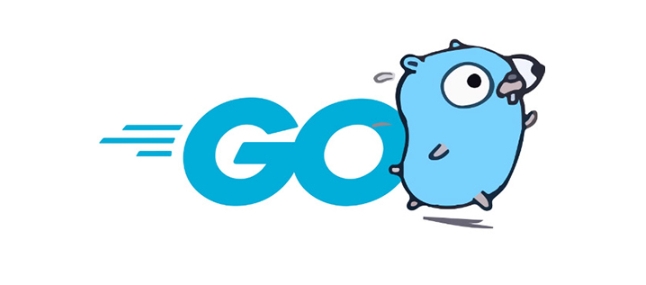How to work with xml in golang
Parsing and generating XML data can be implemented through structure mapping in Go language. 1. To parse XML, you need to define the corresponding structure and convert it with xml.Unmarshal(). The field name matches the label and the first letter is capitalized; 2. When generating XML, you can beautify the output with xml.Marshal() or xml.MarshalIndent(). The default root element is the structure name; 3. When dealing with complex structures, you can use pointer types to deal with missing fields, or use a general structure to process different child nodes; 4. Pay attention to common problems such as namespace, performance optimization, and case sensitivity.

Processing XML data is actually quite straightforward in Go language. As long as you master the basic structure and several key functions, it is still very convenient to use. encoding/xml package in the Go standard library has provided many practical functions, both parsing and generating XML.

Here are a few common scenarios from the perspective of actual use to help you get started quickly.

How to parse XML data
The most common way to parse XML is to first define a structure, and the field name corresponds to the tag name of the XML. Then use xml.Unmarshal() to convert the original data into a structure.
Let's give a simple example:

type Person struct {
Name string `xml:"name"`
Age int `xml:"age"`
}If you have an XML string:
<person><name>Alice</name><age>30</age></person>
This is how to parse:
var p Person err := xml.Unmarshal(data, &p)
A few points to note:
- Structure fields to be exported (first letter capitalization)
- The tag should be written accurately, such as
xml:"name"corresponding to<name>tag - If there is a nested structure in XML, the structure must also be nested accordingly
If the XML structure is complex or uncertain, you can consider using map[string]interface{} or manually traversing the token to parse.
How to generate XML data
Conversely, if you want to convert a structure into an XML string, you can use xml.Marshal() or xml.MarshalIndent() to beautify the output format.
For example:
p := Person{Name: "Bob", Age: 25}
data, _ := xml.Marshal(p)The default output is not indented in a new line. If you want it to be easier to read, you can use:
data, _ := xml.MarshalIndent(p, "", " ")
The result is probably like this:
<Person> <Name>Bob</Name> <Age>25</Age> </Person>
Notice:
- The output root element name is the name of the structure type by default.
- You can customize the tag name by setting
xml:"mytag"tag - If you want to add an XML declaration (for example,
<?xml version="1.0" encoding="UTF-8"?>), you need to manually splice it yourself
Tips for dealing with complex or irregular structures
Sometimes the XML structure is not fixed, such as some fields may not exist, or the tag sequence is confused. This is where some additional processing is needed.
For example, if a field may be missing, it can be declared as a pointer type in the structure:
type Item struct {
ID int `xml:"id"`
Desc *string `xml:"description"`
} If there is no <description> in XML, then this field will be nil and there will be no error.
Another situation is that there are multiple child nodes under the same tag, but their names are different, such as:
<items><itemA>One</itemA><itemB>Two</itemB></items>
In this case, you can define a general structure, or use struct{} to skip the specific structure and extract only the required parts.
Frequently Asked Questions and Notes
- Namespace : XML often has a namespace, such as
<name>. Go's standard library supports handling of namespaces, but requires manual processing of prefixes and URIs. - Performance issues : For very large XML files, parsing to memory at one time may not be efficient enough. At this time, it is recommended to use a streaming parser, such as
Decoder.Token()method to process one line by line. - Case sensitive : The structure fields of Go are case sensitive, so be sure to make sure that the tag and XML tags exactly match.
- Comments and special nodes : The standard library does not support retaining comments, CDATA, etc. If you have this requirement, you may need third-party libraries or expand them yourself.
Basically that's it. Although XML is not as popular as JSON, it cannot be avoided in some system docking. By mastering the structure mapping and analysis methods, you can easily deal with most scenarios.
The above is the detailed content of How to work with xml in golang. For more information, please follow other related articles on the PHP Chinese website!

Hot AI Tools

Undress AI Tool
Undress images for free

Undresser.AI Undress
AI-powered app for creating realistic nude photos

AI Clothes Remover
Online AI tool for removing clothes from photos.

Clothoff.io
AI clothes remover

Video Face Swap
Swap faces in any video effortlessly with our completely free AI face swap tool!

Hot Article

Hot Tools

Notepad++7.3.1
Easy-to-use and free code editor

SublimeText3 Chinese version
Chinese version, very easy to use

Zend Studio 13.0.1
Powerful PHP integrated development environment

Dreamweaver CS6
Visual web development tools

SublimeText3 Mac version
God-level code editing software (SublimeText3)
 Go for Audio/Video Processing
Jul 20, 2025 am 04:14 AM
Go for Audio/Video Processing
Jul 20, 2025 am 04:14 AM
The core of audio and video processing lies in understanding the basic process and optimization methods. 1. The basic process includes acquisition, encoding, transmission, decoding and playback, and each link has technical difficulties; 2. Common problems such as audio and video aberration, lag delay, sound noise, blurred picture, etc. can be solved through synchronous adjustment, coding optimization, noise reduction module, parameter adjustment, etc.; 3. It is recommended to use FFmpeg, OpenCV, WebRTC, GStreamer and other tools to achieve functions; 4. In terms of performance management, we should pay attention to hardware acceleration, reasonable setting of resolution frame rates, control concurrency and memory leakage problems. Mastering these key points will help improve development efficiency and user experience.
 Developing Kubernetes Operators in Go
Jul 25, 2025 am 02:38 AM
Developing Kubernetes Operators in Go
Jul 25, 2025 am 02:38 AM
The most efficient way to write a KubernetesOperator is to use Go to combine Kubebuilder and controller-runtime. 1. Understand the Operator pattern: define custom resources through CRD, write a controller to listen for resource changes and perform reconciliation loops to maintain the expected state. 2. Use Kubebuilder to initialize the project and create APIs to automatically generate CRDs, controllers and configuration files. 3. Define the Spec and Status structure of CRD in api/v1/myapp_types.go, and run makemanifests to generate CRDYAML. 4. Reconcil in the controller
 Go Query Optimization Techniques for PostgreSQL/MySQL
Jul 19, 2025 am 03:56 AM
Go Query Optimization Techniques for PostgreSQL/MySQL
Jul 19, 2025 am 03:56 AM
TooptimizeGoapplicationsinteractingwithPostgreSQLorMySQL,focusonindexing,selectivequeries,connectionhandling,caching,andORMefficiency.1)Useproperindexing—identifyfrequentlyqueriedcolumns,addindexesselectively,andusecompositeindexesformulti-columnquer
 go by example http middleware logging example
Aug 03, 2025 am 11:35 AM
go by example http middleware logging example
Aug 03, 2025 am 11:35 AM
HTTP log middleware in Go can record request methods, paths, client IP and time-consuming. 1. Use http.HandlerFunc to wrap the processor, 2. Record the start time and end time before and after calling next.ServeHTTP, 3. Get the real client IP through r.RemoteAddr and X-Forwarded-For headers, 4. Use log.Printf to output request logs, 5. Apply the middleware to ServeMux to implement global logging. The complete sample code has been verified to run and is suitable for starting a small and medium-sized project. The extension suggestions include capturing status codes, supporting JSON logs and request ID tracking.
 Go for Scientific Computing and Numerical Analysis
Jul 23, 2025 am 01:53 AM
Go for Scientific Computing and Numerical Analysis
Jul 23, 2025 am 01:53 AM
Go language can be used for scientific calculations and numerical analysis, but it needs to be understood. The advantage lies in concurrency support and performance, which is suitable for parallel algorithms such as distributed solution, Monte Carlo simulation, etc.; community libraries such as gonum and mat64 provide basic numerical calculation functions; hybrid programming can be used to call C/C and Python through Cgo or interface to improve practicality. The limitation is that the ecosystem is not as mature as Python, the visualization and advanced tools are weaker, and some library documents are incomplete. It is recommended to select appropriate scenarios based on Go features and refer to source code examples to use them in depth.
 How to recover from a panic in Go?
Jul 23, 2025 am 04:11 AM
How to recover from a panic in Go?
Jul 23, 2025 am 04:11 AM
Panic is like a program "heart attack" in Go. Recover can be used as a "first aid tool" to prevent crashes, but Recover only takes effect in the defer function. 1.recover is used to avoid service lapse, log logs, and return friendly errors. 2. It must be used in conjunction with defer and only takes effect on the same goroutine. The program does not return to the panic point after recovery. 3. It is recommended to use it at the top level or critical entrance, and do not abuse it, and give priority to using error processing. 4. The common pattern is to encapsulate safeRun functions to wrap possible panic logic. Only by mastering its usage scenarios and limitations can it play its role correctly.
 Stack vs heap allocation with pointers in Go
Jul 23, 2025 am 04:14 AM
Stack vs heap allocation with pointers in Go
Jul 23, 2025 am 04:14 AM
Stack allocation is suitable for small local variables with clear life cycles, and is automatically managed, with fast speed but many restrictions; heap allocation is used for data with long or uncertain life cycles, and is flexible but has a performance cost. The Go compiler automatically determines the variable allocation position through escape analysis. If the variable may escape from the current function scope, it will be allocated to the heap. Common situations that cause escape include: returning local variable pointers, assigning values to interface types, and passing in goroutines. The escape analysis results can be viewed through -gcflags="-m". When using pointers, you should pay attention to the variable life cycle to avoid unnecessary escapes.
 Go for Image Manipulation Libraries
Jul 21, 2025 am 12:23 AM
Go for Image Manipulation Libraries
Jul 21, 2025 am 12:23 AM
Common Go image processing libraries include standard library image packages and third-party libraries, such as imaging, bimg, and imagick. 1. The image package is suitable for basic operations; 2. Imaging has a complete function and a simple API, which is suitable for most needs; 3. Bimg is based on libvips, has strong performance, which is suitable for large images or high concurrency; 4. Imagick binds ImageMagick, which is powerful but has heavy dependencies. Quickly implement image scaling and cropping. You can use the imaging library to complete it through a few lines of code in Resize and CropAnchor functions, and support multiple parameter configurations. Adding filters or adjusting tones can be achieved through the color transformation function provided by imagination, such as Graysc







